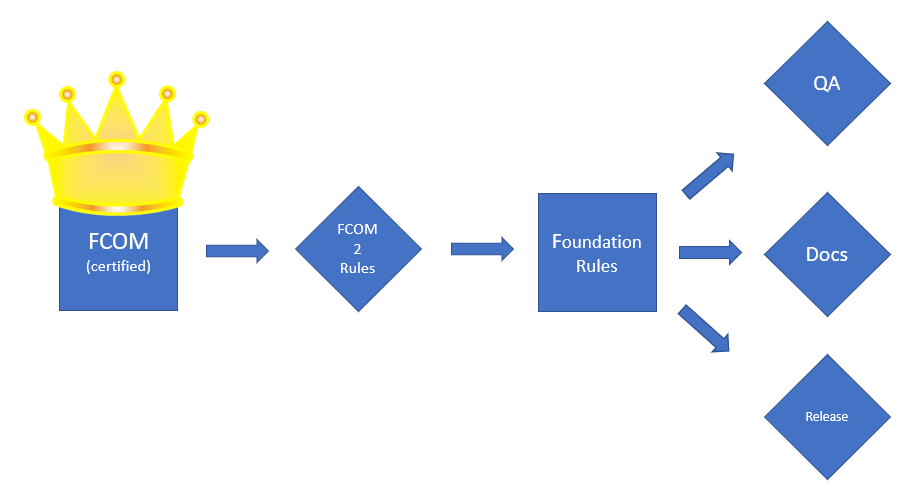COM Overview
Introduction
What is COM?
COM is the Common Object Model. It is an authoritative, language-neutral format written in JSON that documents, reports, and defines rules for applications. COM has inherent security, is declarative, and supports processors like Elasticsearch. COM supports SNMP devices (either traps or polling).
How Does COM Work?
The COM applications in our SDK convert your MIBs into Oracle Communications COM definition files. These definitions are in a JSON format that defines the SNMP OIDs needed to satisfy basic polling functionality like CPU, Memory, Disk, Temp, Fan, Interfaces, etc. The Oracle Communications COM definition file names are FCOM for fault and PCOM for performance metrics.
Oracle Communications Unified Assurance COM SDK has the following applications:
-
MIB2FCOM - Run this with a Management Information Base (MIB) file to generate a pre-certified FCOM file that then goes through curation to create a certified FCOM file.
-
FCOM2Rules - Run this with the certified FCOM file to generate the foundation rules.
-
FCOM2Test - Run this to generate a set of synthetic test traps to test the workflow of the curated FCOM file.
-
PCOM2Rules - Run this with a certified PCOM to generate the foundation rules. You must use a file that has already been manually curated and certified—Oracle Communications does not provide a MIB2PCOM app in the SDK.
The following diagram shows the overall process for converting your MIBS to OCUA FCOM files.

Description of illustration mib2fcom.png
The following diagram shows the overall process for creating foundation rules with a certified FCOM file.

Description of illustration fcom-to-foundation-rules.png